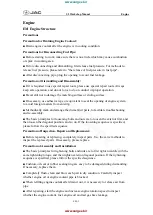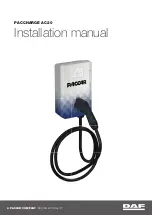
If the front passenger front air bag is
deployed, the rate of inflation will be
influenced by
R
the rate of vehicle deceleration as assessed
by the air bag control unit
R
the front passenger's weight category as
identified by the OCS
G
WARNING
According to accident statistics, children are
safer when properly restrained on the rear
seats than on the front-passenger seat. Thus,
we strongly recommend that children be
placed in the rear seats whenever possible.
Regardless of seating position, children 12
years old and under must be seated and
properly secured in an appropriate infant
restraint, toddler restraint, or booster seat
recommended for the size and weight of the
child.
The infant or child restraint must be properly
secured with the vehicle's seat belt, the seat
belt and Top Tether strap, or lower anchors
and Top Tether strap, fully in accordance with
the child seat manufacturer's instructions.
Occupants, especially children, should always
sit as upright as possible, wear the seat belt
properly and use an appropriately sized infant
restraint, toddler restraint, or booster seat
recommended for the size and weight of the
child.
Children can be killed or seriously injured by
an inflating air bag. Note the following
important information when circumstances
require you to place a child in the front-
passenger seat:
R
Your vehicle is equipped with air bag
technology designed to deactivate the
front-passenger front air bag in your vehicle
when the system senses the weight of a
typical 12-month-old child or less along
with the weight of a standard appropriate
child restraint on the front-passenger seat.
R
A child in a rear-facing child restraint on the
front-passenger seat will be seriously
injured or even killed if the front-passenger
front air bag inflates in a collision which
could occur under some circumstances,
even with the air bag technology installed
in your vehicle. The only means to eliminate
this risk completely is never to place a child
in a rear-facing child restraint in the front-
passenger seat. We therefore strongly
recommend that you always place a child
in a rear-facing child restraint on the rear
seat.
R
If you install a rear-facing child restraint on
the front-passenger seat, make sure the
45
indicator lamp is illuminated,
indicating that the front-passenger front air
bag is deactivated. Should the
45
indicator lamp not illuminate or go out while
the restraint is installed, please check
installation. Periodically check the
45
indicator lamp while driving to
make sure that the
45
indicator
lamp is illuminated. If the
45
indicator lamp goes out or remains out, do
not transport a child on the front-passenger
seat until the system has been repaired.
A child in a rear-facing child restraint on the
front-passenger seat will be seriously
injured or even killed if the front-passenger
front air bag inflates.
R
If you place a child in a forward-facing child
restraint on the front-passenger seat:
-
move the seat as far back as possible
-
use the proper child restraint
recommended for the age, size and
weight of the child
-
secure child restraint with the vehicle's
seat belt according to the child seat
manufacturer's instructions
R
For children larger than the typical 12-
month-old child, the front-passenger front
air bag may or may not be activated.
G
WARNING
If the red
6
SRS warning lamp in the
instrument cluster and the
45
indicator lamp light up simultaneously, the
50
Occupant safety
Safety
Summary of Contents for 2013 GL X166
Page 1: ...GL Operator s Manual Nur f r internen Gebrauch For internal use only...
Page 4: ......
Page 32: ...30...
Page 80: ...78...
Page 158: ...156...
Page 331: ...Useful information 330 Stowage areas 330 Features 338 329 Stowage and features...
Page 360: ...358...
Page 376: ...374...
Page 432: ...430...
Page 446: ...444...
















































